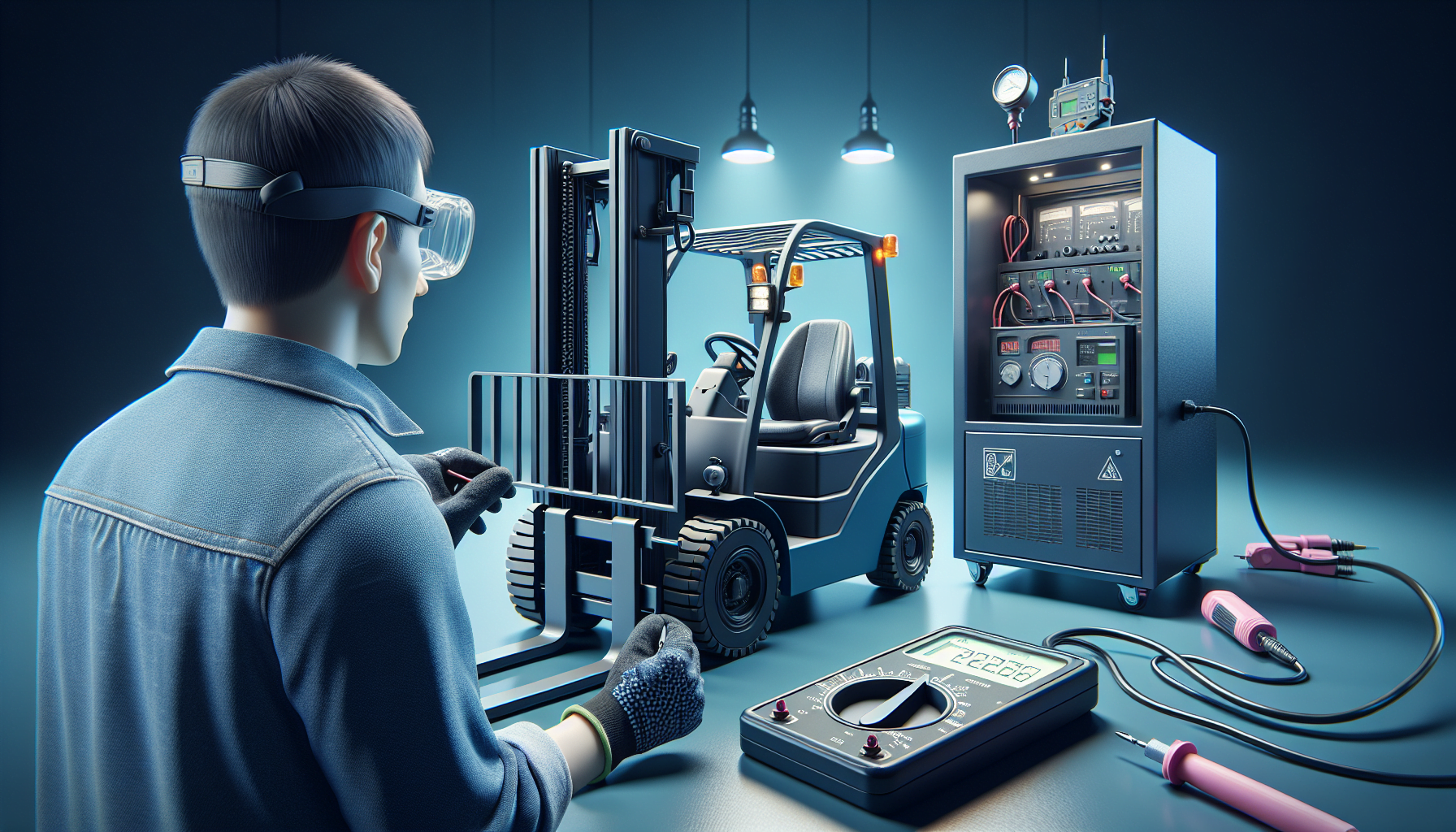Forklifts don’t move without power—and in most warehouses, that power comes from a battery. If that battery isn’t charged right, everything slows down. Orders back up. Machines sit idle. Productivity takes a hit. That’s why proper forklift battery charging isn’t just a maintenance task—it’s a key part of your daily operations.
Handled correctly, a battery gives you consistent power, fewer breakdowns, and a much longer service life. Handled poorly? You’ll be replacing it sooner than you think—and dealing with a lot more downtime in between.
Why Charging Right Matters
- Longer battery life: Smart charging habits can add months—sometimes years—to a battery’s lifespan.
- Better performance: A properly charged battery delivers the full power your forklift needs, especially under heavy loads.
- Fewer safety risks: Dead or unstable batteries cause unexpected stops and electrical faults. That’s a hazard you don’t want on the warehouse floor.
How to Charge Forklift Batteries the Right Way
1. Use the Right Charger for the Job
Not all chargers are equal. A mismatched charger can overcharge, undercharge, or deliver inconsistent voltage—all of which shorten battery life. Make sure your charger is designed for the type, size, and voltage of your forklift battery. Smart chargers that adjust based on battery condition are worth the investment.
2. Create a Charging Routine
Don’t just charge when it’s convenient. Set a schedule. Ideally, charge during breaks or shift changes when lifts are idle. Avoid waiting until the battery is completely drained—that puts stress on the system and shortens life.
A good rule of thumb? Recharge when the battery drops to about 20–30% capacity. Don’t run it into the ground.
3. Watch the Charging Process
Most modern chargers display charge progress. Check it. Make sure the battery is accepting the charge as expected. Look for any error codes. If the charge takes much longer than usual, something may be wrong.
Monitoring doesn’t mean hovering—it means awareness. A quick glance during your shift walk-through can catch issues before they escalate.
4. Avoid Overcharging at All Costs
Leaving a battery on the charger too long causes overheating, water loss, and accelerated wear. Overcharging is silent damage—you might not notice a problem until the battery’s lifespan is cut in half.
Use chargers with automatic shut-off, and don’t leave batteries on overnight unless that’s part of a managed long-cycle charge plan recommended by the manufacturer.
5. Don’t Let It Drain Too Far
Deep discharges—where the battery drops near zero—are rough on battery chemistry. They reduce capacity, increase internal resistance, and shorten usable life.
Make it policy to top off when the battery dips below 30%. Don’t wait until the machine slows to a crawl.
6. Keep It Clean
Dirt, corrosion, and acid buildup around battery terminals restrict current flow and increase resistance—both of which impair charging. Clean terminals regularly. Use proper PPE and neutralizing cleaner for any acid residue.
Also, check water levels in lead-acid batteries. Top off with distilled water as needed—never tap water. And only refill after charging, not before.
The Bottom Line
Forklift batteries are a big investment. Treat them right, and they’ll pay you back with consistent uptime, fewer replacements, and smoother shifts. Ignore them, and they’ll remind you—loudly and expensively—that charging isn’t something to take lightly.
Need help managing your fleet’s power strategy? HCO Innovations o

